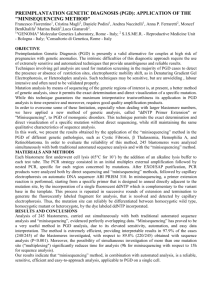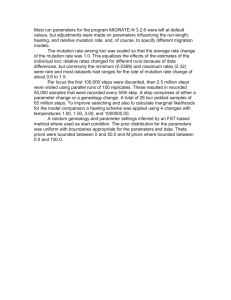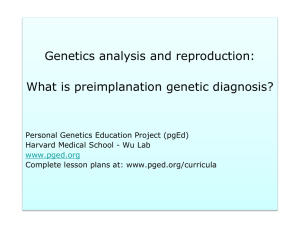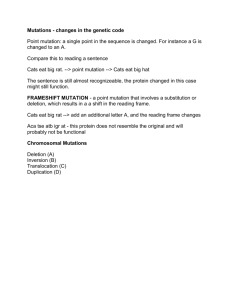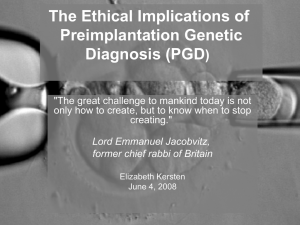minisequencing method
advertisement
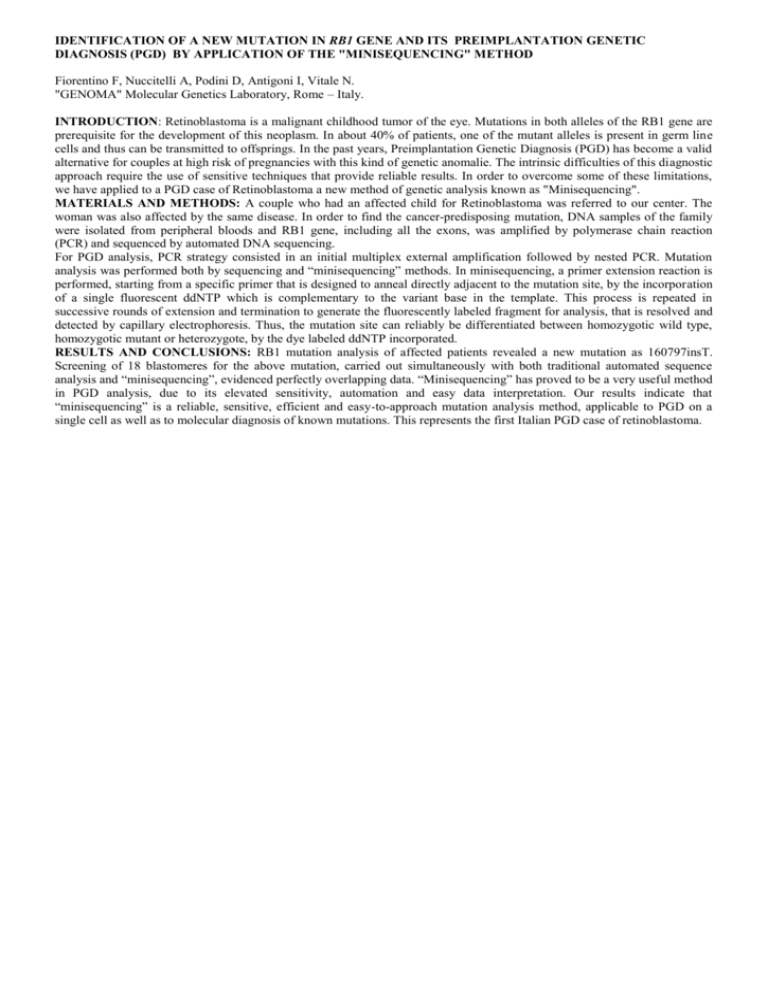
IDENTIFICATION OF A NEW MUTATION IN RB1 GENE AND ITS PREIMPLANTATION GENETIC DIAGNOSIS (PGD) BY APPLICATION OF THE "MINISEQUENCING" METHOD Fiorentino F, Nuccitelli A, Podini D, Antigoni I, Vitale N. "GENOMA" Molecular Genetics Laboratory, Rome – Italy. INTRODUCTION: Retinoblastoma is a malignant childhood tumor of the eye. Mutations in both alleles of the RB1 gene are prerequisite for the development of this neoplasm. In about 40% of patients, one of the mutant alleles is present in germ line cells and thus can be transmitted to offsprings. In the past years, Preimplantation Genetic Diagnosis (PGD) has become a valid alternative for couples at high risk of pregnancies with this kind of genetic anomalie. The intrinsic difficulties of this diagnostic approach require the use of sensitive techniques that provide reliable results. In order to overcome some of these limitations, we have applied to a PGD case of Retinoblastoma a new method of genetic analysis known as "Minisequencing". MATERIALS AND METHODS: A couple who had an affected child for Retinoblastoma was referred to our center. The woman was also affected by the same disease. In order to find the cancer-predisposing mutation, DNA samples of the family were isolated from peripheral bloods and RB1 gene, including all the exons, was amplified by polymerase chain reaction (PCR) and sequenced by automated DNA sequencing. For PGD analysis, PCR strategy consisted in an initial multiplex external amplification followed by nested PCR. Mutation analysis was performed both by sequencing and “minisequencing” methods. In minisequencing, a primer extension reaction is performed, starting from a specific primer that is designed to anneal directly adjacent to the mutation site, by the incorporation of a single fluorescent ddNTP which is complementary to the variant base in the template. This process is repeated in successive rounds of extension and termination to generate the fluorescently labeled fragment for analysis, that is resolved and detected by capillary electrophoresis. Thus, the mutation site can reliably be differentiated between homozygotic wild type, homozygotic mutant or heterozygote, by the dye labeled ddNTP incorporated. RESULTS AND CONCLUSIONS: RB1 mutation analysis of affected patients revealed a new mutation as 160797insT. Screening of 18 blastomeres for the above mutation, carried out simultaneously with both traditional automated sequence analysis and “minisequencing”, evidenced perfectly overlapping data. “Minisequencing” has proved to be a very useful method in PGD analysis, due to its elevated sensitivity, automation and easy data interpretation. Our results indicate that “minisequencing” is a reliable, sensitive, efficient and easy-to-approach mutation analysis method, applicable to PGD on a single cell as well as to molecular diagnosis of known mutations. This represents the first Italian PGD case of retinoblastoma.
